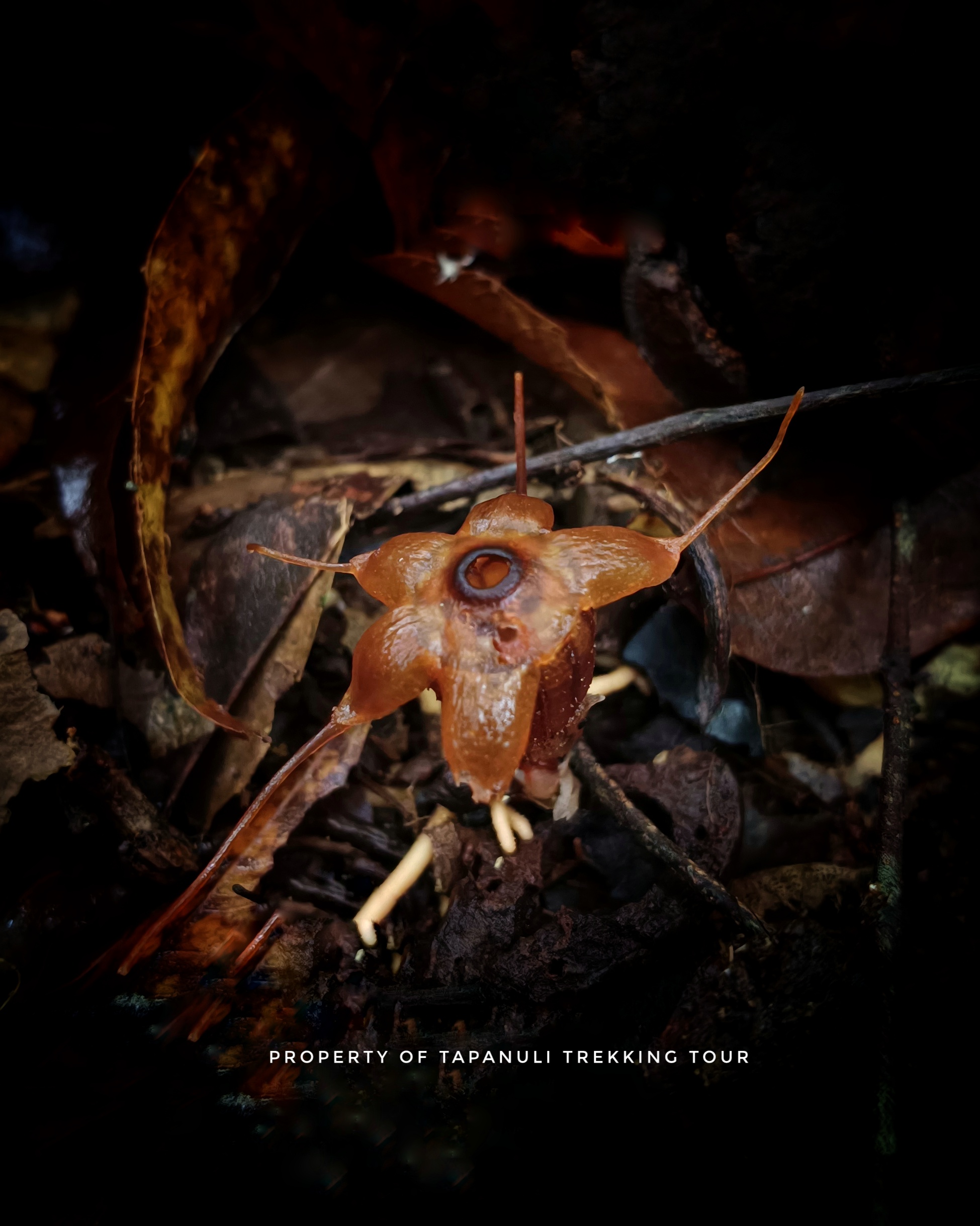Discover the hidden wonders of North Sumatra’s tropical forest through a unique ecotourism experience to observe the rare Thismia plant.
What is Thismia?
Thismia is a unique and rare genus of plants in the Burmanniaceae family. Known for its unusual characteristics, Thismia plants lack chlorophyll and do not perform photosynthesis like most green plants. Instead, they live as saprophytic or mycoheterotrophic plants, relying on symbiotic relationships with fungi to absorb nutrients from decaying organic matter.
1. Physical Characteristics
Thismia plants are very small, often with tiny stems and scale-like leaves. Their standout feature is their striking flowers, shaped like bells or tubes, and brightly colored in hues such as white, orange, or purple, often adorned with intricate patterns.
2. Habitat
These plants are usually found in moist tropical forests across Southeast Asia, including Indonesia, Malaysia, and Thailand. They thrive in organic-rich soil beneath dense forest canopies where sunlight is minimal.
3. Unique Adaptation
Due to their lack of chlorophyll, Thismia species depend entirely on mycorrhizal fungi to extract nutrients. This makes them highly sensitive to environmental changes and very dependent on the health of their surrounding ecosystem.
4. Reproduction
Thismia produces flowers to attract small insects for pollination. The flower’s unique shape and vivid colors are key to drawing in pollinators, which are essential to the plant’s life cycle.
5. Scientific Significance
Thismia is a subject of great interest in botanical research, especially in studies of mycorrhizal symbiosis and the evolution of non-photosynthetic plants. Their rarity also makes them important indicators of tropical forest ecosystem health.
6. Conservation Status
Many Thismia species are considered rare or endangered due to tropical forest loss and habitat degradation. Because of their complex life cycle and strict ecological requirements, they are very difficult to cultivate outside their natural habitat.
Ecotourism: The Thismia Tour Experience
A Thismia forest tour offers a rare opportunity to observe this fascinating plant in its natural habitat.
1. Tour Location
Sitandiang Forest, part of the Batang Toru landscape in North Sumatra, Indonesia, is home to an incredibly rich biodiversity. Two undescribed species of Thismia have recently been discovered here—suggesting that more unknown species may still await discovery.
2. What You’ll Do on the Tour
Field Observation: Guided walks into the forest to locate and identify Thismia and other unique flora.
Nature Photography: Ideal for macro photography enthusiasts drawn to the flower’s unusual beauty.
Environmental Education: Learn about tropical forest ecology, mycorrhizal symbiosis, and the importance of ecosystem conservation.
3. Things to Consider
Season: The best time to join a Thismia tour is during the wet season—between November and early January—when the plants are more likely to appear.
Permits: Some areas like Batang Toru require special access. Tapanuli Trekking Tour already holds the necessary permits, so guests can join without having to apply themselves.
Ecotourism like this not only supports conservation efforts but also offers deep insight into the unique symbiotic relationships that shape our natural world.
Interested? Contact us to learn more about our available tours.


Comment (0)